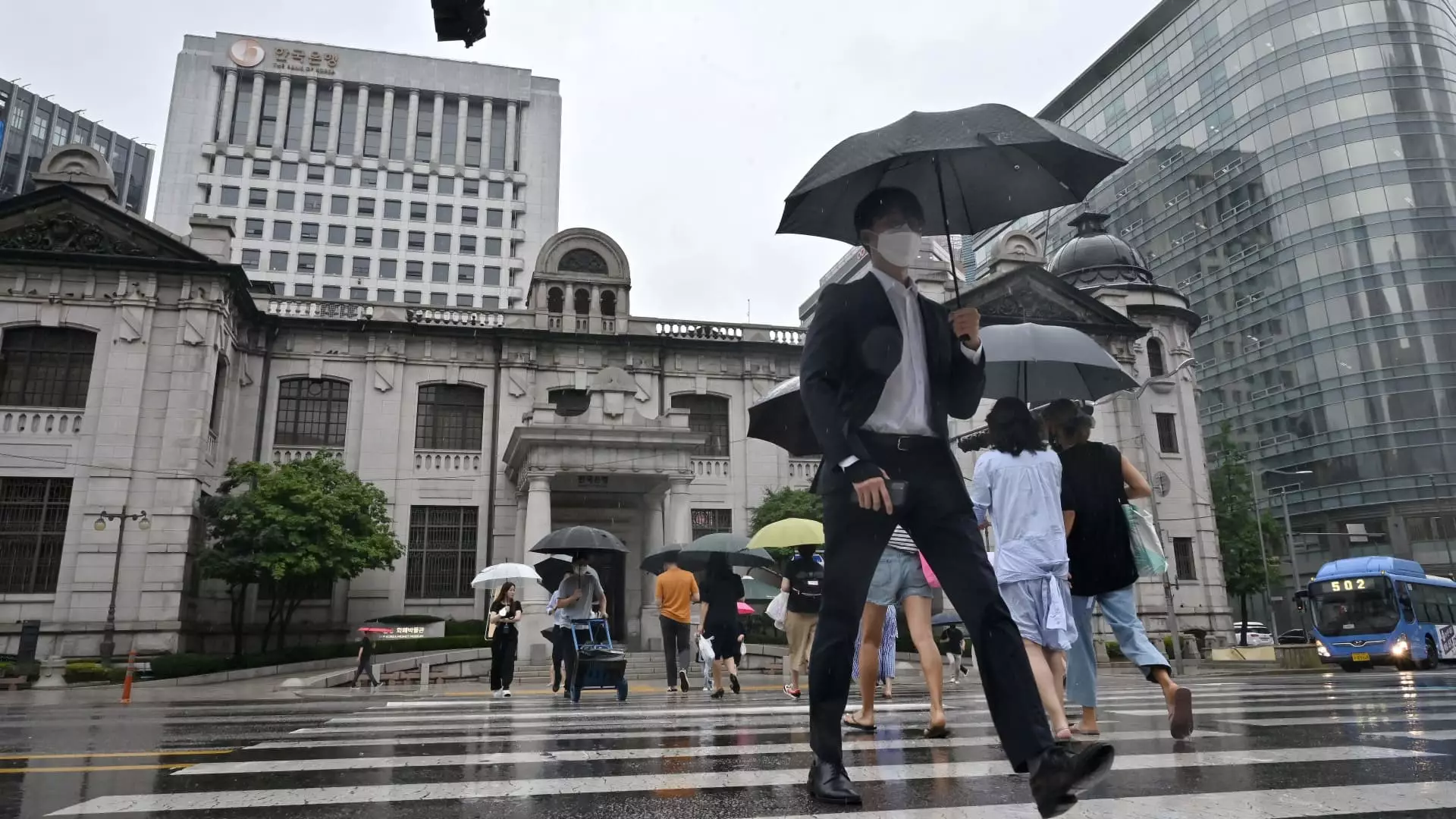In a significant monetary policy shift, South Korea’s central bank, the Bank of Korea (BOK), has reduced its benchmark interest rate by 25 basis points, bringing it down to 3.25%. This marks the first decrease since March 2022, a time when the Federal Reserve began tightening its monetary stance. The decision reflects economic conditions that suggest a need for reevaluation of the previous aggressive rate hikes that cumulatively increased rates by 300 basis points over 16 months. The timing of this cut is particularly illustrative of the changing economic landscape, as September’s inflation fell to a three-year low of 1.6%, significantly below the BOK’s target of 2%.
The BOK has cited several stabilizing factors in its recent statement, indicating that inflation appears to have normalized following a tumultuous period. With household debt growth decelerating and tensions in the foreign exchange markets appearing to abate, it stands to reason that a slightly less restrictive approach could be warranted. The bank has explicitly stated that it aims to examine the implications of this rate cut going forward, signaling a cautious approach to future monetary policy decisions. This reduction in rates may also serve as a reflection of broader global economic conditions and a response to previous inflationary spikes that reached 6.3% in July 2022.
Economists are interpreting this move as a potential sign of an impending cycle of rate cuts. Park Seok Gil, JPMorgan’s chief economist for Korea, noted that this reduction is not merely a reaction to sluggish domestic demand but represents a strategic realignment of monetary policy. Analysts expect that further easing of the rate—possibly up to 75 basis points—may support private consumption growth, which is essential for driving economic improvement. As expectations for a more stable inflationary environment solidify, consumer confidence might strengthen in tandem, creating a favorable feedback loop.
Anticipation regarding further cuts has been characterized as “long-awaited” by many financial analysts, including Morgan Stanley’s chief economist for Korea, Kathleen Oh. Observations suggest that macroeconomic conditions have evolved to support this shift in policy, highlighting a favorable atmosphere for restrained inflation coupled with subdued housing demand. The interplay between these factors has allowed central bank policymakers to adopt a more dovish stance, paving the way for increased adaptability in monetary strategy.
Overall, the Bank of Korea’s decision to cut interest rates is indicative of a broader trend towards economic stabilization. With inflation moderating and market conditions becoming increasingly favorable, this strategic pivot serves not just as a response to current economic challenges but also as an anticipatory measure for fostering sustainable growth. The potential for continued easing in the monetary policy landscape underscores a commitment to navigating through complexities in both domestic and global markets effectively. As the situation unfolds, monitoring economic indicators will be crucial in determining the trajectory of South Korea’s economic health.


Leave a Reply